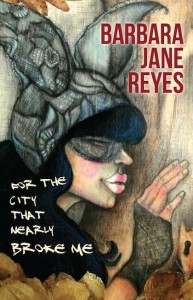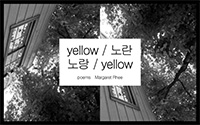For The City That Nearly Broke Me by Barbara Jane Reyes | Aztlan Libre Press 2012 | $13
In my California, we know how to party. We Black Panther Party. We 2PAC and Dre. We Dime a Day, we Dollar a Dance. We Fillmore jazz. We Summer of Love. We Barbary Coast. We I-Hotel. We Chinatown. We North Beach howl.
In my California, we no Baywatch babe. We East Los, we South Central LA. We Rodney King video. We campesino. We mighty Sacramento River. Rooted deep sequoia giants, we lovin’ the wind, we kissin’ the sky.
(from “My California” 34)

I met up with Barbara Jane Reyes at Shooting Star Cafe in Oakland Chinatown to chat about her new chapbook For The City That Nearly Broke Me. The project started with a writing prompt: write about a city that saved you, then write about a city that broke you. As Barbara began to think about what it would mean “to be broken by a city,” she decided to approach it by writing about places that “were the most emotionally complicated for me.” The chapbook hovers over and between Manila (“my birthplace but not necessarily my home”) and Oakland, where she has been living for the past decade but is not sure she can claim as her own.
I resonated with what Barbara had to say regarding the internal conflict inherent in claiming place and claiming home. Many immigrants and children of immigrants struggle with a similar tension; our birthplaces (or our parents’ birthplaces), with their histories of colonization, are now tourist destinations, and both the industry of tourism and the good intentions of our families make it difficult for us to “forge a connection” with these places. In Barbara’s case, her “attempts to go deeper are thwarted” by the gaze of the tourist as well as by her own family, who implies that there are things about Manila she might not be able to handle, that “there is only so much we want you to see.”
The title poem of the chapbook has 17 parts, #3 of which, “Junto al Pasig,” references a José Rizal poem and talks about the Pasig River. Barbara spoke about the Pasig as a river that gives its name to the Filipino people, but a river that is also environmentally dead. Many squatter communities now make their homes around this dead river. Barbara’s “Junto al Pasig” illustrates the sacred decay of the river with a juxtaposition of two “streams,” in a sense; one of “giardia,” “DDT” and “blooming cholera” and another of divine incantation and “divina aurora” (5).

